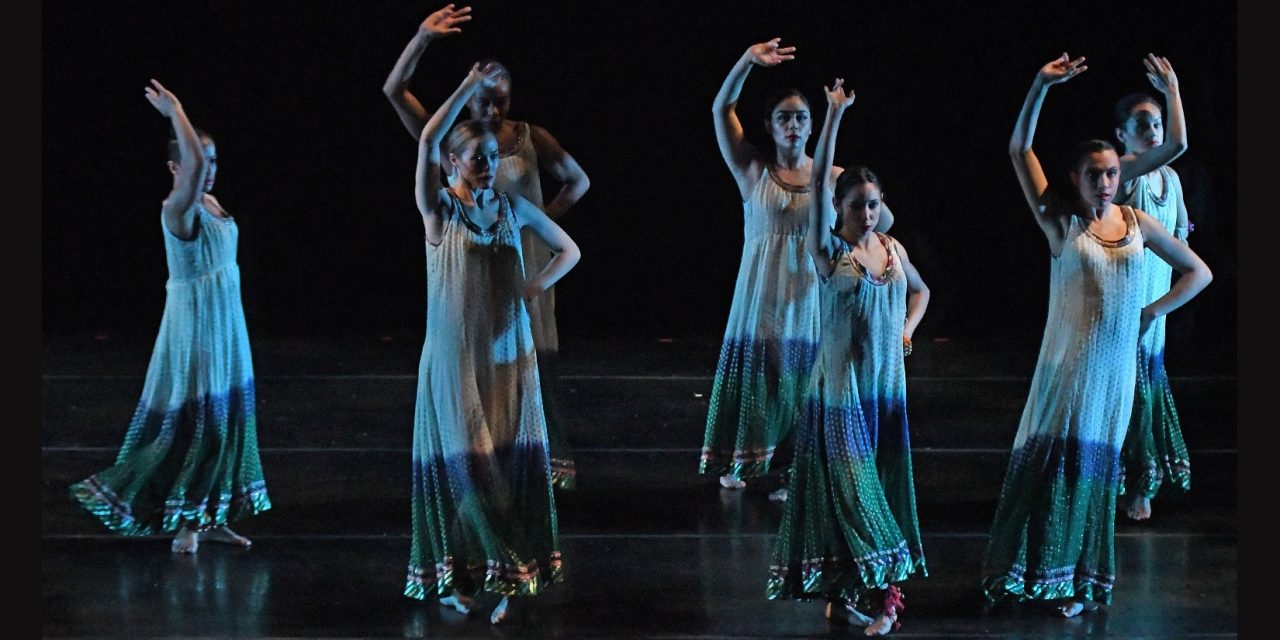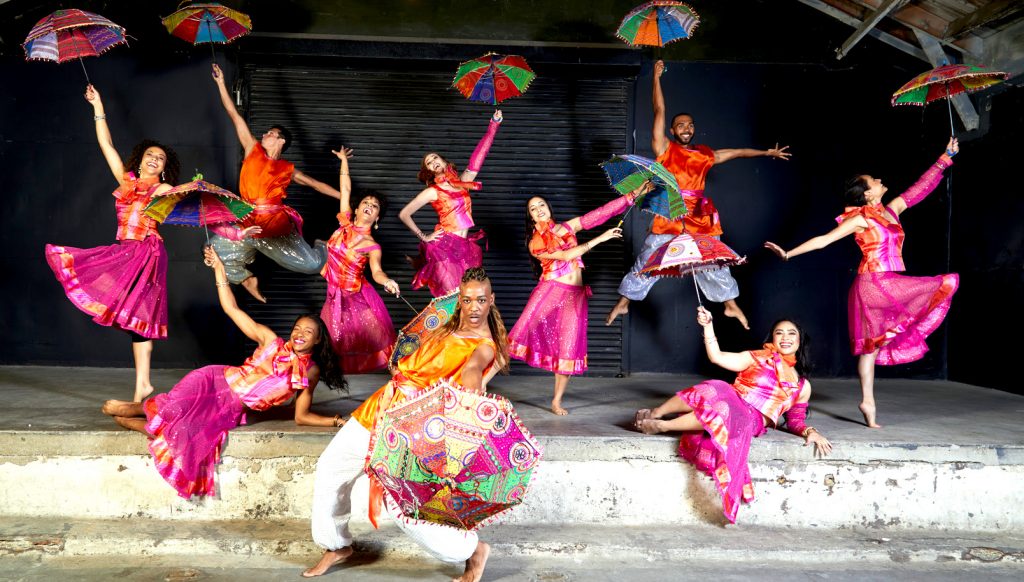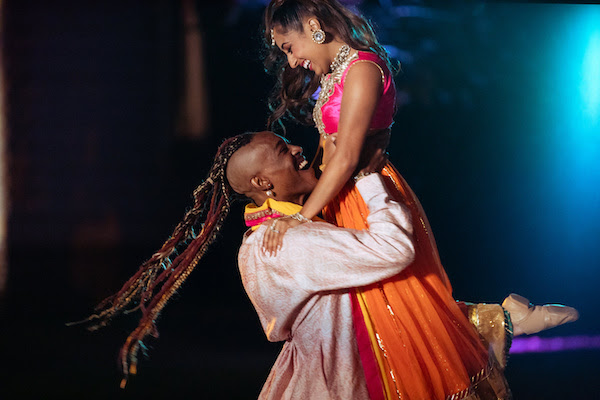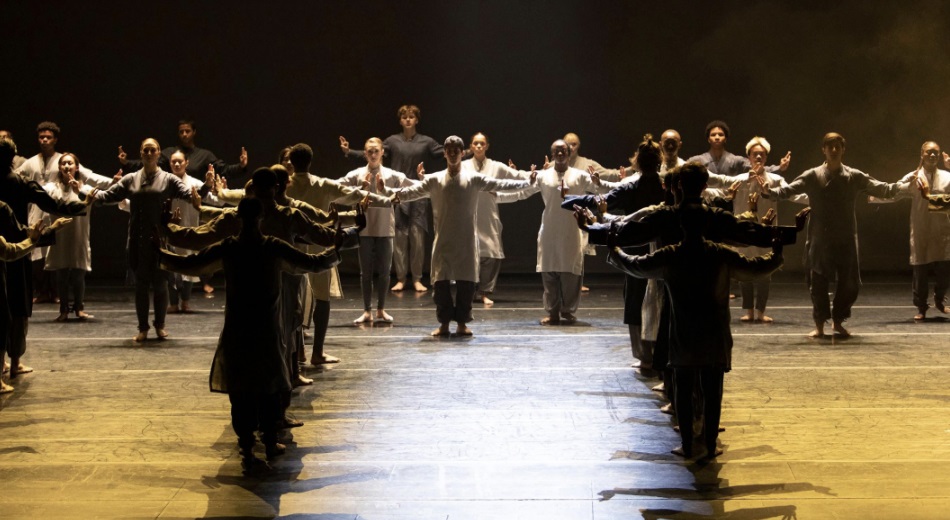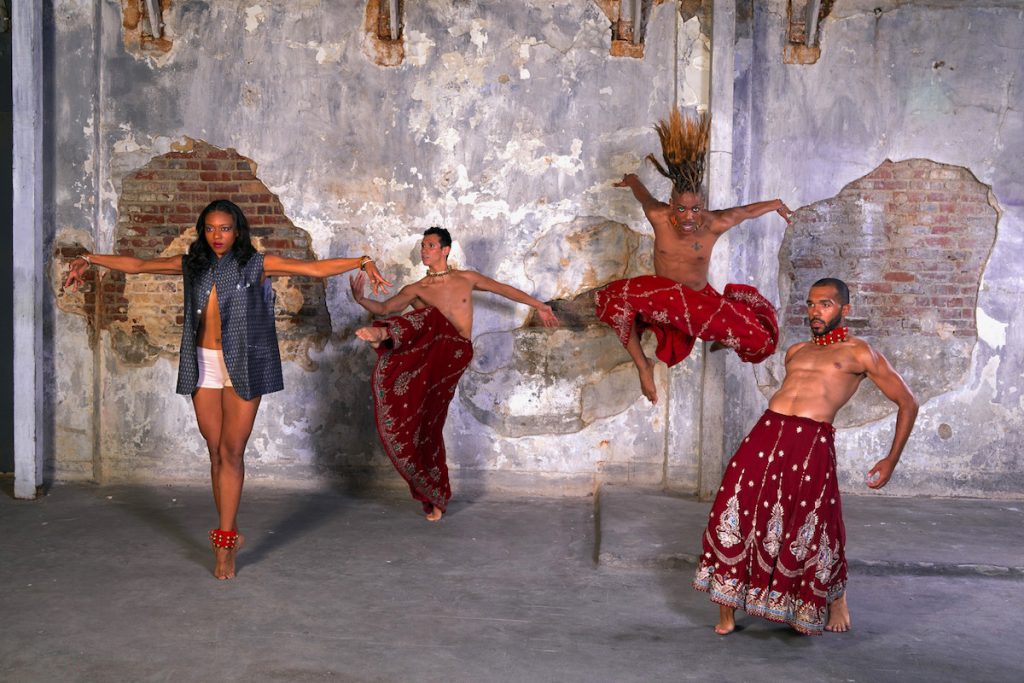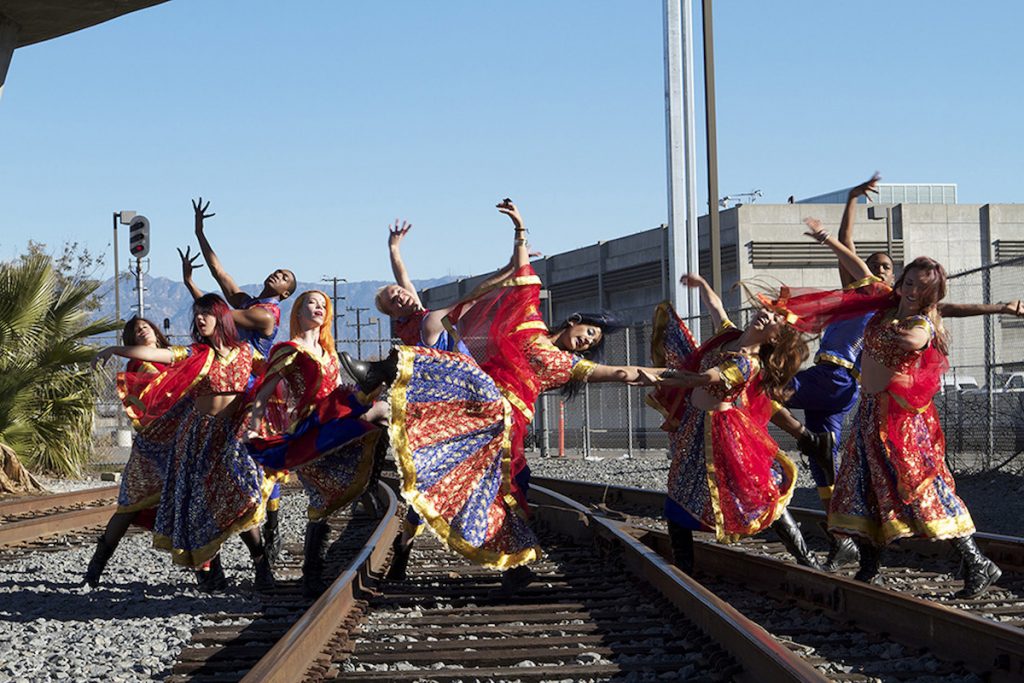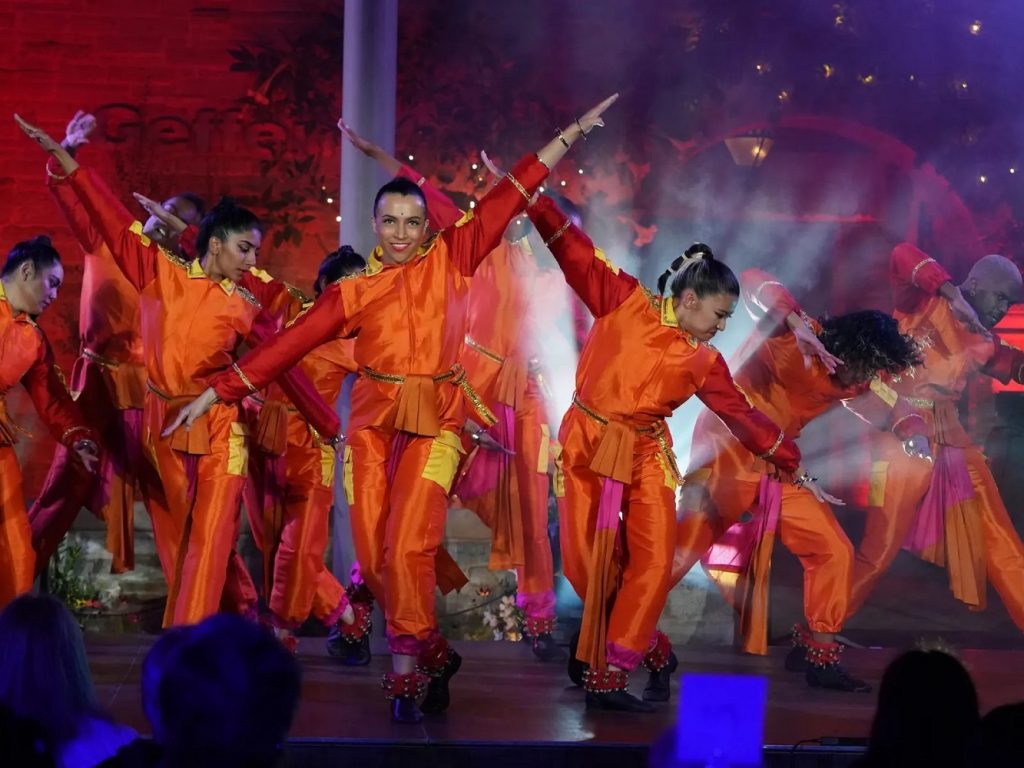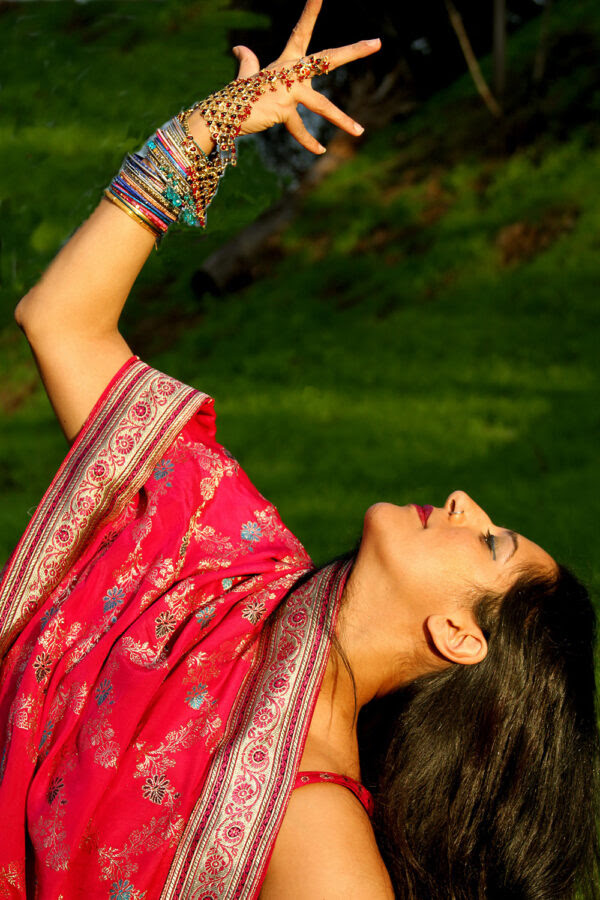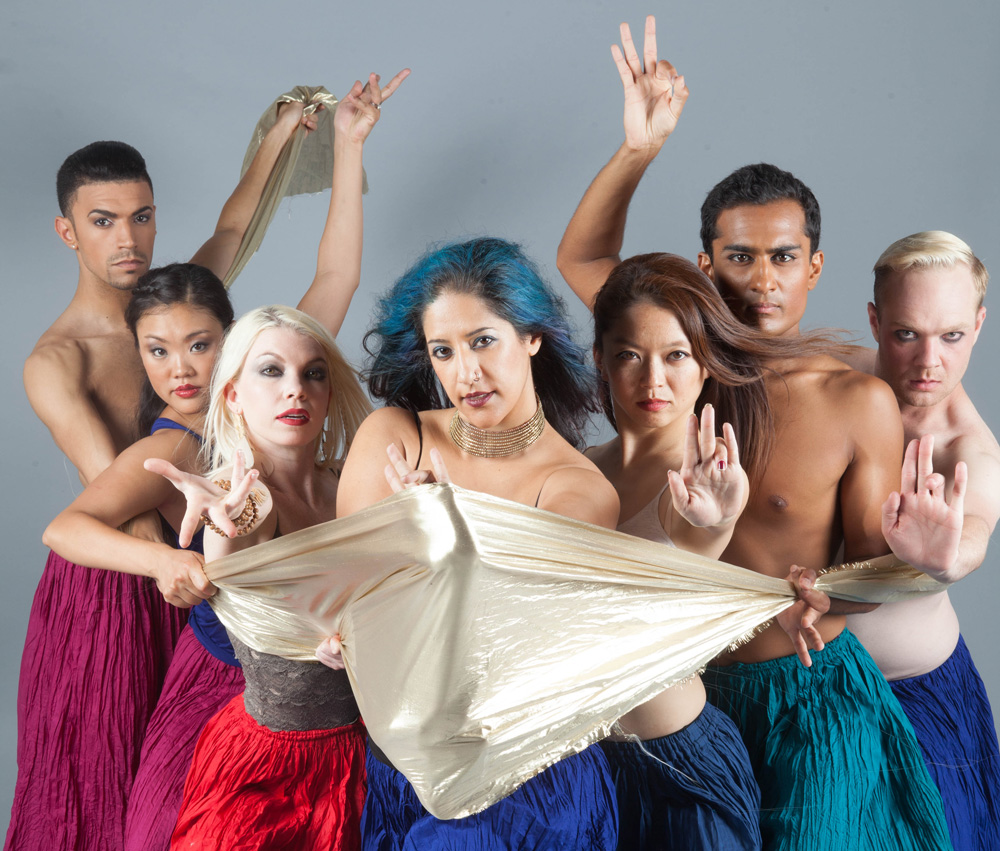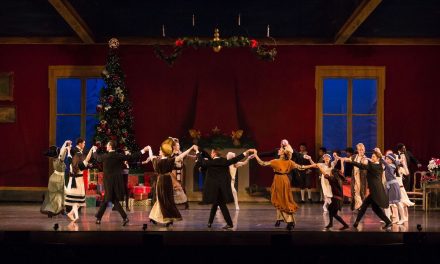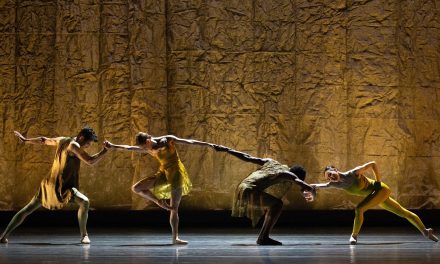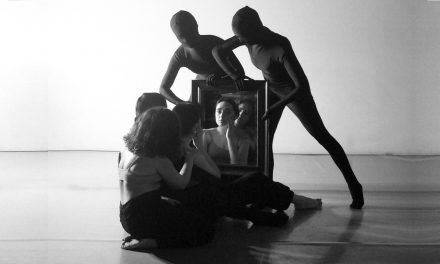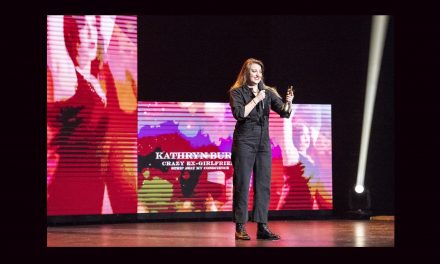Hip-Hop, modern, ballet, tap, and South Asian dance are blended with more than a soupçon of Bollywood as choreographer Achinta S. McDaniel and her Blue13 Dance Company return to the Wallis Annenberg Center for the Arts on May 12 & 13.
While her work draws on a range of dance genres, the Bollywood element is what initially catches attention. In a recent interview, McDaniel contended that the confluence of styles are part of what defines her choreography as both contemporary and American.
“My family is from India. I was born here. What contemporary dance looks like to me as a South-Asian-American is going to differ from white-Euro-centric modern dance traditions like Paul Taylor or Martha Graham. Hip hop, Bollywood, it’s all contemporary,” McDaniel suggests. “I still employ and respect classical Indian dance like Kathak, but I also adore my modern dance roots and my ballet roots and my tap roots, and all those show up for me because I’m bi-cultural. So an audience may see a section that is Bollywood, then hip hop then modern. The five works we chose for this program reflect all that.”
Blue13 performed at the Wallis on February 21, 2020, two weeks before the Covid 19 pandemic shutdown.
“After three years with theaters closed and not being able to gather dancers or an audience, I’m bursting with wanting to have a big, stunning group of dancers on that stage,” McDaniel enthused. For these performances, the company brings 18 dancers to the stage, more than the eight to ten Blue13 takes on tour.
That pleasure in performing again is reflected in the most buoyant work on the program, Shaadi Medley, a mix of contemporary, Bollywood, Bangra, and hip hop that captures the flavor of a wedding in India. Produced in late summer 2021 as an immersive, site specific event at the Heritage Square Museum, the outdoor work reflected caution but also the short-lived optimism that the pandemic might finally be subsiding.
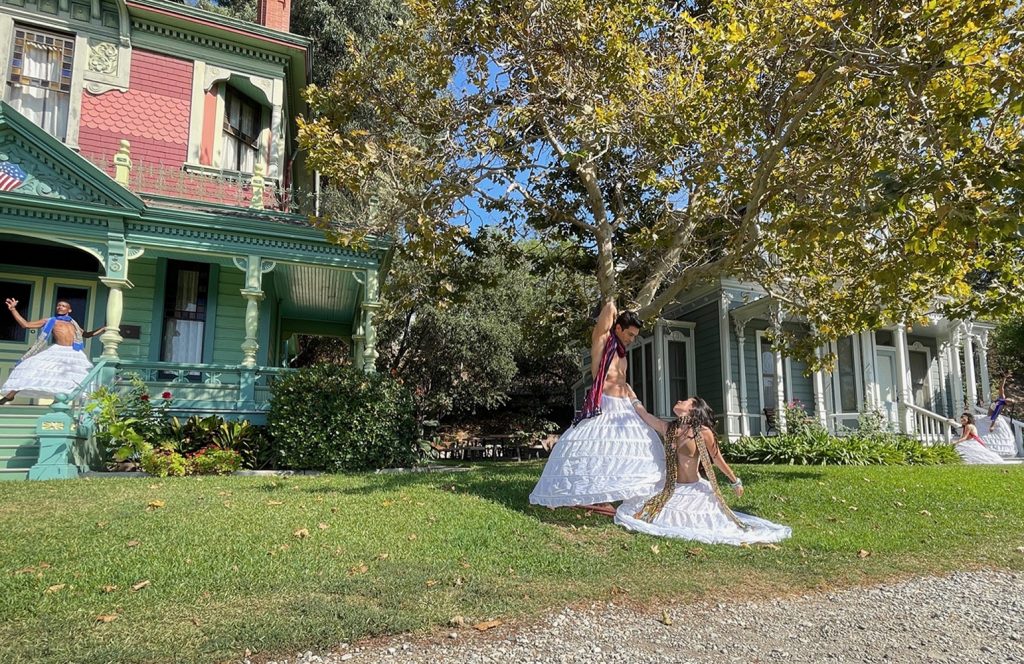
Blue13 Dance Company – L-R Kirby Harrell, Antonio Martinez, Monica Moskatow, Buckmaster Wright, and Adrianna Vieux – Photo by Robert Gomez
“Shaadi” means wedding in Hindi,” McDaniel translated. “The dancers initially present the colorful public face of the wedding before vignettes show what was really going on with this family and guests behind closed doors. We’re doing some parts of that larger work.”
A year after Shaadi, summer 2022 found Blue13 at REDCAT’s much-admired New Original Works (NOW) Festival with Restless autumn, restless spring . McDaniel’s choreography focused on the isolation and separation during the pandemic as well as the subsequent reawakening of artistic and human collaboration. Dancers wrote on the floor in different colors of chalk, the colors spreading and blending as the dancers began moving. In her review for LA Dance Chronicle, Grace Courvoisier wrote the effect of “blending, blending, blending colors, until the original hue is wiped clean completely resonated within me when it comes to our own melting pot of a country. The commentary of coming together in shared experiences, identities, and memories to live in one experience to never be recreated again was extremely beautiful and terribly nostalgic all at once.”
Another work very close to McDaniel’s heart is 1947 and aftermath of the partition of India and Pakistan.
“1947 considers how the mood at end of British colonial rule was initially celebratory, but then the seismic partition into India and Pakistan devolved into brutal power struggles that threw previously peaceful, co-existing communities into a civil war, sending millions into exile including my grandparents,” McDaniel explains.
Starting in 2015, McDaniel interviewed different people who experienced the events after partition including McDaniel’s father and her late grandmother. In the course of the interviews, McDaniel learned her maternal grandmother had to leave in the dead of night after someone warned her parents that there was a plan to kidnap their daughter.
McDaniel’s grandparents were Sikhs and lived in the Lehore region which is now Pakistan. “From those interviews, everyone had been living peacefully, Hindi, Muslim, Sikhs and others. Nothing divided them before Partition, but the after effects caused so much hatred, so much pain,” McDaniel described. “The thing that strikes me most and makes me the saddest is they all left thinking they would come back, and that fleeing was only temporary. Many of those who fled witnessed or were victims of the atrocities, and over a million people, some say about 2 million people died.” McDaniel thinks that if asked, any South Asian, no matter of which generation, knows what Partition is, but many in the audience have no idea because it isn’t included in the American school system.
“These are difficult matters to dance about, but it’s something I think is just so important to bring this history to fore here in the United States.” she added, “but the message that you are no longer allowed here or your religion is not allowed here is not limited to South Asia and Partition. We see it happen all over the world. It’s relatable to so many people whether today’s refugees in Bangladesh, Ukrainians fleeing Russian bombs, or historical situations where Jews fled Nazi Germany or the northern migration of African-Americans with the onset of the South’s Jim Crow laws,” McDaniel emphasizes.
The choreographer was finalized in 1947 while she was on the faculty at USC Kaufman School of Dance last year. “When USC told me I had 44 dancers, I knew the time had come and exactly what I wanted to do. Of course, now it’s been adapted for 18 dancers,” she said.
One encore from that 2020 Wallis performance, Dear Mr. Khan, addresses another type of tyranny. In her review for Arts Meme, critic Debra Levine described the work as “a cri de couer of a modern multicultural woman.” Video of the work shows hoop skirts descending onto the dancers, the vintage undergarment becoming a symbol of oppression and resistance.
McDaniel also talked about Sounds Like Whoop, Looks Like Flash, her work in progress focused on issues of isolation and trying to conform to models or to present images that are not real.
“’Even before the Covid shutdown, I’d been curious for many years about how the flattened, curated images of self that we put out through social media like Instagram and tick tock, aren’t real. They disguise the reality of the things we live with, things like disability, addiction, or family trauma that we’ve gone through,” McDaniel said. “Thinking about the things we’ve been through as humans in the last three years, it also felt like a very timely moment for the piece considering where I am in my life and career looking inward.”
“I think coming from an Indian home and as a first generation Indian woman born in America, all of my works have talked a little bit about two sides, like the feeling of being torn in two pieces—one part as a bi-cultural dancer and the other as the child of immigrant parents, always never quite Indian enough, never quite “American” enough.” McDaniel explained. “Immigrant culture often encourages presenting a self that always smiles, that fits in, that we belong here and with that goal of assimilation . The constant message is to be excellent, be beautiful, be the best, study the hardest, get the best grades. That’s what I grew up with. While my parents are the biggest supporters of my work as an artist, that perfect facade is not real. Yet equally unreal is the other media image in the U.S. where Indians are shown throwing the colorful powder at Holi. Indian immigrants are much more nuanced, just like other cultures.”
McDaniel provided a primer on Bollywood, Bangla and Kathak, the three types of South Asian dance she employs.
She noted that there are multiple film industries in India, but Bollywood is the nickname for the Munbai based Hindi film industry that annually produces hundreds of musical films. McDaniel described Bollywood films as often over three hours long, with lip-synching, usually a love story, multiple dance numbers with large unison casts of background dancers, and the dance numbers are over the top and lyrical, both art and entertainment.
“I think Bollywood is the most recognizable Indian dance because of that connection with film and perhaps it’s resemblance to the Busby Berkeley dance numbers in the classic Hollywood musicals,” McDaniel said. “It’s an infectious escapism that looks so easy, has a universal attraction, and its profile has been amplified by social media.”
“Bangra is a Punjabi folk form of dance and music that uses a dhol drum, a type of two sided drum, and is characterized by a celebratory joy whether it’s celebrating the wheat harvest or just getting together, There’s lots of shoulder movements, dancers in formations, and considerable high energy bouncing. When I teach it, I say to bounce as if the floor is a trampoline.” she described.
McDaniel pointed out that while India has eight classical dance forms, Kathak which she uses, is the only one from Northern India, the rest are from Southern India.
“It’s known as the straight leg dance because it’s not in that sort of wide turned-out plié we see in the other Southern dance forms,” McDaniel noted, adding “Like all classical dance from India, Kathak is rooted in storytelling. There’s heavy rhythmic footwork, turns, lots of hands and arms and facial expression to tell the story. “
“I appreciate and honor the other classical Indian dance forms, but Punjabi heritage made Kathak a natural fit. It changed my life. It changed my approach to how I think about rhythm, how I talk, how I teach,” she confessed.
McDaniel grew up studying ballet, tap, jazz, and modern, only coming to Kathak as an adult. After graduating from NYU in dance, she realized her focus had been exclusively white, Euro-centric dance. She decided to confront her heritage and spent six months in India intensively engaged in Kathak trainings.
On her return, McDaniel settled in New York and started a dance company. The move to California came when her bi-coastal romantic relationship evolved into a marriage proposal that required moving to California where her husband was in film.
“My New York friends said are you crazy? You’re starting a company here. Why are you going to LA? There’s no dance in LA.” McDaniel recounted. “But then, my husband said are you going to take that lying down? If anyone can do it, it is you. He knew I could not resist that kind of challenge,” McDaniel chuckled.
The choreographer admits when she first arrived, she thought her friends were right and the move was crazy. But soon, McDaniel found various worlds colliding all at once, and a good way.
She started teaching classes, introducing Bollywood which no one was teaching at the time.
“South Asians were excited because there now were Bollywood classes and non-South Asians at the studios came in wondering what Bollywood was,” McDaniel recalled. “At the same time, I was starting a dance company that I saw as contemporary until I recognized I was again compartmentalizing my ‘Indian-ness’ separate from being American and I realized my work could reflect that multiplicity.”
More than 20 years later, McDaniel’s insight about the strength of that duality continues to fuel Blue13, including this return visit to the Wallis. She is quick to say her New York friends were wrong when they said there was no dance in LA.
“The dance community here is constantly overlooked. It forever feels like we’re knocking on the door. Ironically, it’s easier to find presenters on tour than to find presenters here in LA.”
She gave credit to the Wallis as one of the few major venues consistently presenting her company and other LA-based dance.
“The Wallis is a great example of how a venue can be successful when presenting local dance communities. It has recognized there are all these incredible dance companies in the backyard of all these presenting venues in LA. I hope those other presenters come and see the value in our local dance community. The Wallis has become a central place that we can look to and it’s great that it is hosting us and other local companies.”
Blue13 dancers include Alisa Carreras, Arjun Kochhar, Atticus Dobbie, Bella Allen, Brenan Gonzalez, Chelsea Correa, Emily Carr, Esi Samuels, Felisya Soqui-Garcia, Hayden Rivas, Janae Holster, Malachi Stevens, Moira Saxena, Onye Stevenson, Presley Hawk, Satori Folkes-Stone, Shea Hancock, William Okajima.
Blue13 at Wallis Annenberg Center for the Arts, 9390 N. Santa Monica Blvd., Beverly Hills; Fri.-Sat., May 12-13, 7:30 pm, $29-$79. For more information and tickets, please click HERE.
For more information about Blue13 Dance Company, please visit their website.
Written by Ann Haskins for LA Dance Chronicle.
Featured image: Blue13 Dance Company performing the West Coast premiere of “F**k Fusion Version2: Or, How to/Not to Be Adequately Indian” by Artistic Director/choreographer Achinta McDaniel – Photo by Kevin Parry

